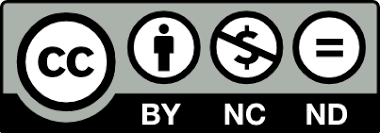Análisis clínico y epidemiológico del uso de psicofármacos en niños hospitalizados en un centro de referencia nacional
Publicado
Cómo citar
Número
Sección
Licencia
Derechos de autor 2025 Revista de Psiquiatría Infanto-Juvenil

Esta obra está bajo una licencia internacional Creative Commons Atribución-NoComercial-SinDerivadas 4.0.
DOI:
https://doi.org/10.31766/revpsij.v42n2a3Palabras clave:
psicofármacos, psicofármacos en niños, trastorno del espectro autista, trastorno por déficit de atención, trastorno de hiperactividadResumen
Introducción: Teniendo como problemática el aumento en la prescripción de psicofármacos, nos propusimos realizar un estudio prospectivo con el fin de establecer la prevalencia y características clínicas y epidemiológicas del uso de psicofármacos en pacientes pediátricos. Objetivos: Analizar las características clínicas y epidemiológicas del uso de psicofármacos en pacientes pediátricos del Centro Hospitalario Pereira Rossel entre los meses de septiembre a octubre del 2023. Materiales y métodos: Se realizó un estudio descriptivo, transversal mediante la revisión de historias clínicas electrónicas complementado con entrevistas. Se incluyeron todos los niños, niñas y adolescentes entre 2 y 14 años ingresados en salas de cuidados moderados pediátricos que al momento del ingreso estuviesen con tratamiento psicofarmacológico. Resultados: Dentro de la clasificación de los psicofármacos, el 72% utilizaron antipsicóticos. Presentó polifarmacia el 47% de los pacientes. El fármaco más utilizado en monoterapia fue la Risperidona. En relación con la polifarmacia, las combinaciones más frecuentes fueron antipsicóticos con antidepresivos. El motivo de indicación más frecuente de psicofármacos fue por trastornos disruptivos, del control de los impulsos y de la conducta. Conclusión: En nuestro estudio se comprobó que existe un aumento del uso de psicofármacos en politerapia, y que la prescripción no está acompañada de un correcto monitoreo. Además, se evidenció escasez en la indicación de tratamientos no farmacológicos. Se debería realizar estudios que profundicen en estos aspectos y que comparen la efectividad de los distintos abordajes, para realizar un protocolo de actuación para los niños, niñas y adolescentes que presenten trastornos de salud mental.
Descargas
Citas
Viola L, Garrido G, Varela A. Características epidemiológicas de la salud mental de los niños montevideanos. Revista de Psiquiatría del Uruguay. 2008;72(1): 9-20. http://www.spu.org.uy/revista/ago2008/02_trabajo%20orig.pdf
Hernández-Carrillo M, Botero-Carvajal A, Jiménez-Urrego ÁM, Gutiérrez-Posso AG, Bastidas CAM. Prevalence of mental disorders in children treated in a public psychiatric hospital. Revista de Salud Pública. 1 de enero de 2019;21(1): 29-33. https://doi.org/10.15446/rsap.V21n1.69129 DOI: https://doi.org/10.15446/rsap.v21n1.69129
Viola L, Garrido G. Características epidemiológicas del trastorno por déficit atencional en los escolares uruguayos. Revista de Psiquiatría del Uruguay. 2009;73(2): 157-68. http://www.spu.org.uy/revista/dic2009/03_TO.pdf
Visser SN, Danielson ML, Bitsko RH, Holbrook JR, Kogan MD, Ghandour RM. Trends in the parent-report of health care provider-diagnosed and medicated attention-deficit/hyperactivity disorder: United States, 2003-2011. Am Acad Child Adolesc Psychiatry. 2014;53(1): 34-46. https://doi.org/10.1016/j.jaac.2013.09.001 DOI: https://doi.org/10.1016/j.jaac.2013.09.001
Caponi S. Necropolítica y psiquiatrización de la infancia en tiempos de pandemia. Revista de Psicología Universidad de Antioquia. 2022;13(2): 1-16. https://doi.org/10.17533/udea.rp.e346020 DOI: https://doi.org/10.17533/udea.rp.e346020
Dany Carmenate Rodríguez I, Salas Mayea Y. Perfil clínico y epidemiológico de población infantil con manifestaciones psiquiátricas durante la pandemia de COVID-19. Revista Cubana de Pediatría. 2021;93(1). http://scielo.sld.cu/scielo.php?script=sci_arttext&pid=S0034-75312021000100004
Lares I. Farmacoepidemiología de psicofármacos empleados en la práctica pediátrica en el Servicio de Psiquiatría Infantil del Hospital General de Durango. México. Bol. Med. Hosp. Infant. Mex. 2010 Feb;67(1): 27-36. http://www.scielo.org.mx/scielo.php?script=sci_arttext&pid=S1665-11462010000100004&lng=es
Mastroianni M, Ackermann C, Speranza N, Catenaccio V, Telechea H, Giachetto G, et al. Características del uso de psicofármacos en niños hospitalizados. Archivos de Pediatría del Uruguay. 2017;88(3): 132-41. http://www.scielo.edu.uy/pdf/adp/v88n3/1688-1249-adp-88-03-00132.pdf
Cornellà Canals J. Psicofármacos en Pediatría. Boletín de Pediatría. 2009;49: 339-42. https://www.sccalp.org/documents/0000/1489/BolPediatr2009_49_339-342.pdf
Mollejo E. Psicofármacos en niños y adolescentes: Revisión y situación actual. Revista de la sociedad española de neuropsiquiatría. 2005;(95): 141-50. https://scielo.isciii.es/scielo.php?pid=S0211-57352005000300008&script=sci_arttext DOI: https://doi.org/10.4321/S0211-57352005000300008
Wong ICK, Murray ML, Camilleri-Novak D, Stephens P. Increased prescribing trends of paediatric psychotropic medications. Arch Dis Child. 2004;89(12): 1131-2. https://doi.org/10.1136/adc.2004.050468 DOI: https://doi.org/10.1136/adc.2004.050468
Berti A., Bielli A., Bruno G. Uso de psicofármacos en la infancia. Miradas desde el psicoanálisis [Tesis de pregrado]. Montevideo: Universidad de la República; 2020. https://sifp.psico.edu.uy/sites/default/files/trabajos_finales/archivos/trabajo_final_de_grado._reformulado.adriana_berti-convertido_1.pdf
Urion K, Nelson D. Tratado de Pediatría, Vol 1. Meneghello Pediatria; 2016.
Campo A, Ávila G, Trillos E. Psicofarmacología en niños, niñas y adolescentes: una aproximación a la terapéutica. MedUNAB. 2002;5(15):195-202. https://revistas.unab.edu.co/index.php/medunab/article/view/276
Echenique A, Fleitas C, Olivera F. Aumentaron intentos de autoeliminación, casos de ansiedad y depresión en la infancia tras la pandemia y el aislamiento | la diaria [Internet]. Uruguay; 6 de enero de 2024 [Citado 28 de julio de 2024]. Recuperado a partir de: https://ladiaria.com.uy/educacion/articulo/2024/1/aumentaron-intentos-de-autoeliminacion-casos-de-ansiedad-y-depresion-en-la-infancia-tras-la-pandemia-y-el-aislamiento/
Facultad de psicologia, Sociedad uruguaya de pediatría, INAU. DECLARACIÓN Y CONSENSO [Internet]. 2021. https://www.cdnuruguay.org.uy/wp-content/uploads/2021/06/declaracio%CC%81n-y-consenso-2.pdf
Barrios A, Barrios S, Behrens H, Bentos-Pereira C, Di Catterina X, Maurente L, et al. Politerapia en niños y adolescentes hospitalizados en cuidados moderados en el Hospital Pediátrico del Centro Hospitalario Pereira Rossell. Arch Pediatr Urug. 1 de agosto de 2020;91(4): 207-24. https://adp.sup.org.uy/index.php/adp/article/view/124
Kristell P. Características Epidemiológicas del Intento Suicida en Adolescentes. [Honduras]: Acta Pediatrica Hondureña. 2019;9(2): 932-37. https://doi.org/10.5377/pediatrica.v9i2.8787 DOI: https://doi.org/10.5377/pediatrica.v9i2.8787
Gonzalez M, Silvia M. Intento suicida en edad pediátrica, un problema de salud actual. Revista Electronica Medimay. 2020;(3): 288-98. https://www.medigraphic.com/cgi-bin/new/resumen.cgi?IDARTICULO=98949
Noticias ONU. La pandemia de COVID-19 dejará una “huella imborrable” en la salud mental de niños y jóvenes | Noticias ONU [Internet]. 5 de octubre de 2021. Recuperado a partir de: https://news.un.org/es/story/2021/10/1497862
Alonso E, Diz L, Fernández MA, García L, Giachetto G. Controversias terapéuticas en TDAH. An Facultad Med (Univ Repúb Urug). 2015;(2): 36-47. https://core.ac.uk/download/513019367.pdf
Jeste DV, Lohr JB, Eastham JH, Rockwell E, Caligiuri MP. Adverse neurobiological effects of long-term use of neuroleptics: human and animal studies. Journal of psychiatric research. 1998;32(3-4): 201-14. https://doi.org/10.1016/s0022-3956(97)00018-6 DOI: https://doi.org/10.1016/S0022-3956(97)00018-6
Iffland M, Livingstone N, Jorgensen M, Hazell P, Gillies D. Pharmacological intervention for irritability, aggression, and self-injury in autism spectrum disorder (ASD). Cochrane Database of Systematic Reviews. 2023;10: CD011769. https://doi.org/10.1002/14651858.CD011769 DOI: https://doi.org/10.1002/14651858.CD011769.pub2
Storebø OJ, Storm, MRO, Pereira Ribeiro J, Skoog M, Groth C, Callesen HE, et al. Methylphenidate for children and adolescents with attention deficit hyperactivity disorder (ADHD). The Cochrane database of systematic reviews. 2023;3(3): CD009885. https://doi.org/10.1002/14651858.CD009885.pub3 DOI: https://doi.org/10.1002/14651858.CD009885.pub3
Onishi Y, Mikami K, Kimoto K, Watanabe N, Takahashi Y, Akama F, Yamamoto K, Matsumoto H. Second-Generation Antipsychotic Drugs for Children and Adolescents. Journal of Nippon Medical School = Nippon Ika Daigaku zasshi. 2021;88(1), 10-6. https://doi.org/10.1272/jnms.JNMS.2021_88-108 DOI: https://doi.org/10.1272/jnms.JNMS.2021_88-108
Rogdaki M, McCutcheon RA, D'Ambrosio E, et al. Comparative physiological effects of antipsychotic drugs in children and young people: a network meta-analysis. Lancet Child Adolesc Health. 2024;8(7): 510-21. https://doi.org/10.1016/S2352-4642(24)00098-1 DOI: https://doi.org/10.1016/S2352-4642(24)00098-1









 © 2021 AEPNyA Todos los derechos reservados
© 2021 AEPNyA Todos los derechos reservados
